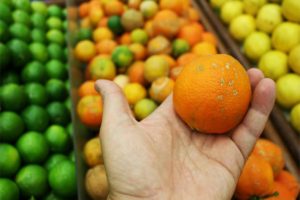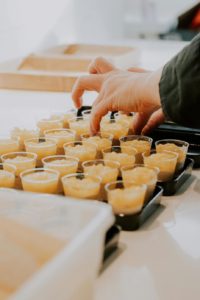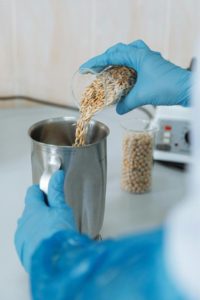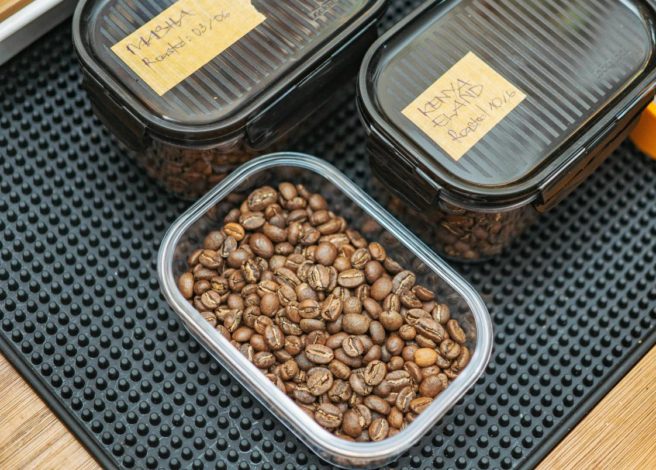- Organoleptic testing bridges lab data and real-world customer experience. It evaluates how food looks, smells, tastes, and feels — the factors that truly drive repeat purchases and brand trust.
- Traditional shelf-life testing isn’t enough. Even with perfect gas composition or microbial control, customers will reject products that seem “off” before their expiration date.
- Sensory testing protects launches and validates shelf-life claims. Whether through internal tastings or trained sensory panels, it helps catch issues early, confirm packaging changes, and differentiate in the market.
- Professional evaluation is a smart investment. Though costs vary, organoleptic testing can prevent expensive failures and strengthen your product’s success from development through distribution.
You’ve perfected your food formulation. Your packaging looks pristine. Lab tests show optimal oxygen and CO2 levels throughout the shelf life. But here’s the brutal truth: none of that matters if your customer opens the package and immediately thinks something’s wrong. This is why organoleptic testing is crucial for food businesses that prioritize quality control.
That strawberry yogurt may seem to pass all the checks, but if it smells off by day 3 of its 10-day shelf life, you’ll lose a customer (and maybe your lunch). Additionally, your leafy greens could have the perfect gas composition. However, if they taste bitter or feel soggy, shoppers won’t want to buy them again, regardless of the data. This is where organoleptic testing becomes your secret weapon.
Your Guide
This week’s conversation features Erik Vandercook, Lab Director at Qfresh Lab, and Jeff Brandenburg, Founder and President of The Qfresh Lab/JSB Group, LLC. Brandenburg combines four and a half decades of packaging technology experience with his background in Chemical and Biomedical Engineering, as well as Food Safety expertise. His dual perspective as both an industry advisor and university lecturer provides unique insights into the evolving landscape of fresh food packaging innovation.
This article will walk you through organoleptic testing. You’ll find out what it is, why it’s essential for your food business, how the methods work, and when to use them in product development. You’ll see how sensory evaluation can protect you from expensive product failures. It will also help you confidently extend shelf-life claims.
Have Your Products Turned Problematic?
 Your lab results suggest one story, but your customers have a different experience. You’re measuring oxygen rates, checking CO2 levels, and watching spoilage signs. But you’re missing the key factor: the sensory experience. This experience determines if customers will buy your product again.
Your lab results suggest one story, but your customers have a different experience. You’re measuring oxygen rates, checking CO2 levels, and watching spoilage signs. But you’re missing the key factor: the sensory experience. This experience determines if customers will buy your product again.
Traditional shelf-life testing looks at clear data points. These include gas composition, wilting, yellowing, and microbial growth. But consumers don’t make purchasing decisions based on technical specifications. They decide with their senses. If your product looks, smells, or tastes “off” before the expiration date, all your scientific testing becomes irrelevant.
This gap leaves food businesses vulnerable to product failures, customer complaints, and market share losses. You might think your 8-day shelf life is conservative and safe, only to discover customers are experiencing quality issues on day 2.
What is Organoleptic Testing?
You have to admit: it’s a rather intimidating phrase to read, let alone comprehend. But it’s okay. We’re here to help.
Organoleptic testing is a method for evaluating sensory experiences. It measures what your customers notice: how your product looks, smells, tastes, and feels. The term may seem complex, but it’s pretty simple. It means using our senses to analyze and judge food quality.
Organoleptic testing differs from instrumental testing. While instrumental testing gives numerical data, organoleptic testing focuses on the human experience. This experience influences buying choices. Evaluators can be trained professionals, company staff, or consumer panels. They assess products using set methods. They look for sensory notes, off-flavors, texture changes, and visual defects. These factors can influence how consumers perceive and accept a product.
This testing connects lab data with real-world consumer experiences. It offers insights that machines can’t provide. Well, unless you have a computer that can taste sour dairy.
Different Approaches to Organoleptic Testing
 Food businesses can pick from various organoleptic testing methods. Each one offers unique benefits. Your choice will depend on your budget, the speed at which you need results, and the level of accuracy required.
Food businesses can pick from various organoleptic testing methods. Each one offers unique benefits. Your choice will depend on your budget, the speed at which you need results, and the level of accuracy required.
Internal Team Testing
The most basic approach involves gathering colleagues for informal taste tests. This method is cost-effective, but it lacks standardization and training. So, results may be less reliable for important business decisions. Not to mention, it can get a bit tiresome always asking your colleague if “this tastes weird.”
Professionally Trained Testing
This is the sweet spot for most food businesses. Trained sensory professionals with specialized education evaluate your products using standardized protocols. These experts can spot specific sensory notes. They might identify notes like strawberries, acidity, or grassiness for example. They can also detect off-flavors, such as the smell of alcohol or gasoline. These off-flavors indicate anaerobic (oxygen-deprived) conditions.
Full Sensory Panel Testing
The gold standard involves assembling a skilled sensory panel. This group of trained specialists will perform thorough evaluations. Large food companies often employ this method for launching new products. However, the time and cost involved can make it difficult for many businesses.
Consumer Panel Testing
Random consumer groups provide feedback, similar to internal testing. However, they include a wider range of people. This method is suitable for final checks, but it doesn’t match the accuracy of a trained professional’s evaluation.
The Strategic Value of Organoleptic Testing
 Understanding the different testing approaches is just the beginning. The true strength of organoleptic testing is in the strategic benefits it offers your food business in key areas.
Understanding the different testing approaches is just the beginning. The true strength of organoleptic testing is in the strategic benefits it offers your food business in key areas.
Shelf-Life Optimization
Organoleptic testing reveals the true functional shelf life of your products. Your 10-day shelf life can actually stretch to 14 days. This could save you money and open new markets. Conversely, on day 12, you may notice flavor changes that are unacceptable. This can lead to unhappy customers and added costs.
New Product Development Protection
Implementing organoleptic testing early in the development process prevents costly mistakes. You find taste issues early, before full-scale production. This way, you can fix problems when it’s still affordable. This early intervention can save thousands on reformulation costs. It also helps avoid market launch disasters. Can you imagine if a new candy bar containing chocolate, mixed nuts, and shrimp went to market without someone testing it first? Apologies for that mental image, or if that’s actually “your thing.”
Packaging Innovation Validation
When switching packaging materials, such as switching from plastic to paper, organoleptic testing helps maintain the sensory quality. It also evaluates if new barrier technologies affect the product’s taste and smell.
Competitive Advantage Documentation
Organoleptic testing provides objective data supporting marketing claims about freshness, flavor, and quality. Demonstrating that your product retains its sensory qualities throughout its shelf life gives you a strong competitive edge.
Testing Parameters and Evaluation Methods
Professional organoleptic testing examines various sensory aspects. It uses standard scales from 1 to 10 or stoplight systems (green, yellow, red) for easy understanding.
Taste evaluation focuses on the five basic taste sensations: sweet, sour, salty, bitter, and umami. “Umami” describes a deep, rich, savory flavor. It gives foods a satisfying, full taste. This quality comes from natural compounds like glutamate, inosinate, and guanylate. Examples of umami-rich foods include aged cheeses, mushrooms, and soy sauce.
Trained experts can detect slight changes in taste during evaluations. These changes may point to quality issues or off-flavors.
Aroma assessment explores the complex world of smells. It includes pleasant notes like fresh, fruity, or savory scents. It also detects unpleasant odors that indicate spoilage, contamination, or packaging issues.
 Visual inspection notes changes in color, texture, moisture loss, or other signs. These factors can influence how consumers perceive a product and their purchasing decisions.
Visual inspection notes changes in color, texture, moisture loss, or other signs. These factors can influence how consumers perceive a product and their purchasing decisions.
Texture analysis examines mouthfeel traits crucial for products such as leafy greens. Crispness is closely linked to how fresh and high-quality they appear.
Strategic Implementation Timing
Smart food businesses implement organoleptic testing at two critical points. Early in product development, testing prevents costly mistakes and guides formulation decisions. You want to know if your new recipe tastes appealing before investing in full production capabilities. (Remember that nightmare of a candy bar we mentioned?)
Final validation testing ensures your product meets sensory expectations. This occurs during its shelf life before it reaches the market. This final check avoids product recalls and customer complaints. Both can harm brand reputation.
Some businesses use ongoing organoleptic testing. This helps them check product consistency and validate process changes. It ensures that quality remains consistent throughout production runs and seasonal changes.
Making Organoleptic Testing Work for Your Business
Successful organoleptic testing relies on the expertise of trained professionals. They possess expertise in both the science and the art of sensory evaluation. These experts offer consistent methods, refined tastes, and unbiased analysis.
Professional organoleptic testing, conducted by companies such as The QFresh Lab/JSB Group, LLC, complements traditional shelf-life studies effectively. This approach provides thorough product validation, encompassing both technical specifications and the consumer experience. Professional testing is a smart investment. It often pays for itself by avoiding a single product failure or allowing for safe shelf-life extensions.
Note: The total cost of this testing varies greatly based on scope, time, number of participants required, and who exactly is conducting the tests. If a fully trained and certified taste panel is involved, the tests can run into the ballpark range of ten thousand dollars and up.
Testing Makes Sense
Organoleptic testing revolutionizes the approach to product development, packaging decisions, and shelf-life claims. Now, you have clear data on the sensory experiences that influence buying decisions, and no more guessing about what consumers like.
You might wonder if you can afford organoleptic testing. But the real question is whether you can launch products without knowing how they taste, smell, and feel to your customers.
 Ready to ensure your products deliver exceptional sensory experiences throughout their shelf life? Professional organoleptic testing services help you improve your formulations. They also validate packaging choices and support your shelf-life claims with confidence. Contact The QFresh Lab/JSB Group, LLC to learn how their sensory experts can assist you. They focus on protecting and enhancing the quality of your products.
Ready to ensure your products deliver exceptional sensory experiences throughout their shelf life? Professional organoleptic testing services help you improve your formulations. They also validate packaging choices and support your shelf-life claims with confidence. Contact The QFresh Lab/JSB Group, LLC to learn how their sensory experts can assist you. They focus on protecting and enhancing the quality of your products.
Are you interested in learning more about packaging solutions for fresh food? Visit the Inline Plastics Learning Center today and explore a wide range of topics.

